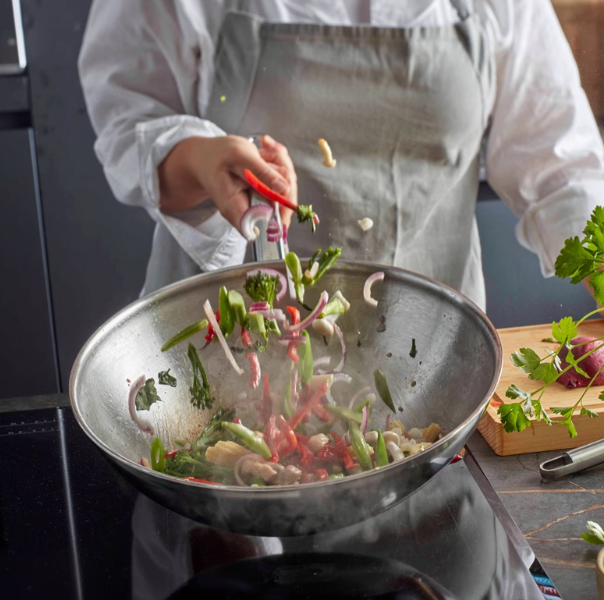
Many people are concerned about whether it is safe to use stainless steel cookware, especially the possible release of chemicals when in contact with food. As a professional stainless steel cookware manufacturer, I will analyze the safety of stainless steel cookware for you so that you can make a wise choice.
Are Stainless Steel Pans Safe ?
Stainless steel cookware is popular for its durability and safety. It contains iron, chromium and nickel, which are corrosion-resistant and heat-resistant. It will not react with food or release harmful substances when cooking, which is very safe.
It is also safe because it has a passivated chromium oxide film on its surface, which can prevent rust and corrosion, maintain high temperature stability, and prevent harmful substances from penetrating into food.
However, if the cookware is worn or scratched, trace amounts of chromium and nickel may seep into the food. This does not affect most people, but people with nickel allergies may be uncomfortable. Nickel-free stainless steel cookware can be selected.
In general, good stainless steel cookware is safe under normal use, but it is also important to keep it intact.

What Grade Of Stainless Steel is Best for Cookware
Look at the grade of stainless steel when buying cookware. Common cookware materials are 304 (18/8 or 18/10) and 316 stainless steel.
18/8 and 18/10 indicate the chromium and nickel content: 18% chromium and 8% or 10% nickel, respectively. Cookware with a high nickel content is more corrosion-resistant. 18/8 is suitable for most cooking, while 18/10 stainless steel is highly corrosion-resistant and is often used in high-quality cookware.
Medical-grade 316 stainless steel contains molybdenum, which is more corrosion-resistant and suitable for cooking acidic and heavy foods, but it is expensive and less common in home cookware.
In addition to the grade, the structure of the cookware is also important. “Composite layer” refers to the multi-layer structure of the cookware, which usually includes a core of magnetic material such as aluminum or copper, and an outer layer of stainless steel. This structure makes the cookware surface non-reactive and evenly conducts heat.
For example, three-layer stainless steel cookware is made of two layers of stainless steel and a layer of thermally conductive metal, which is lightweight and has high thermal conductivity. Some brands even have five or seven layers, which are more durable and better at keeping heat.
| Feature | 304 Stainless Steel | 316 Stainless Steel |
| Composition | 18% Chromium, 8-10% Nickel | 18% Chromium, 10% Nickel, 2-3% Molybdenum |
| Corrosion Resistance | Good, but less resistant to chlorides | Excellent, highly resistant to chlorides and harsh environments |
| Durability | Very durable, resistant to rust and staining | Extremely durable, ideal for high-stress environments |
| Heat Resistance | Good, handles high temperatures well | Excellent, performs better in extreme heat |
| Price | Generally more affordable | More expensive due to additional molybdenum |
| Ideal Use | Everyday cookware, general kitchen use | High-end cookware, marine or chemical environments, medical applications |
| Maintenance | Easy to clean and maintain | Requires less maintenance due to superior corrosion resistance |